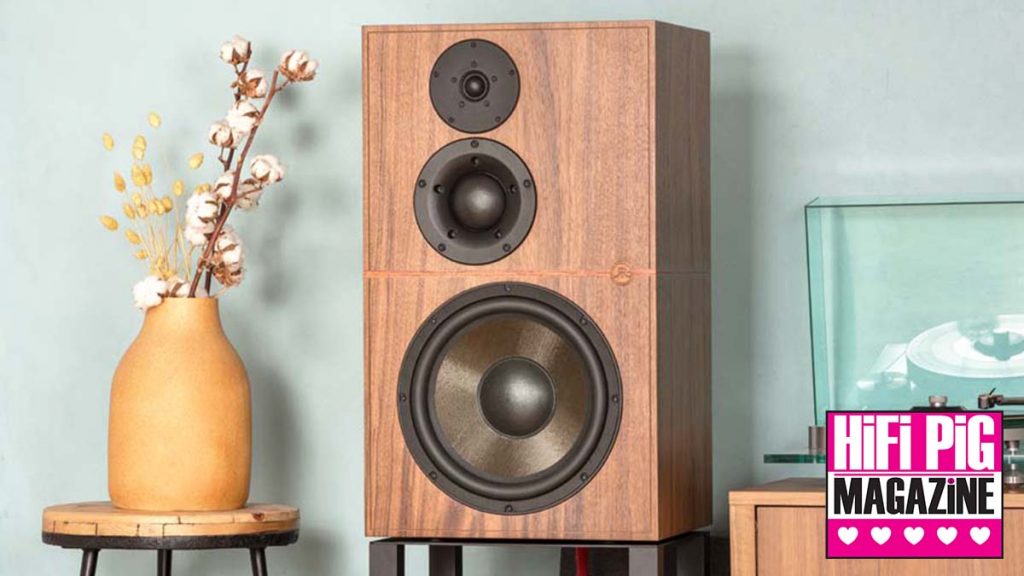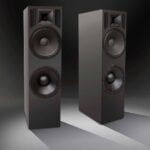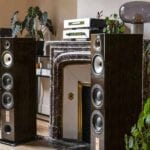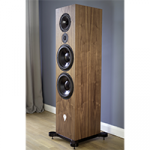REVIVAL AUDIO ATALANTE 5 LOUDSPEAKERS
Revival Audio is a relatively new french company with two products to their name; the Atalante 3 and the much larger Atalante 5 that we have here. They cost €4490/£4490 plus £399 for the stands.
WHO ARE REVIVAL AUDIO
Revival Audio is a French-based manufacturer created by Daniel Emonts and Jacky Lee with their loudspeakers being designed in collaboration with Paris-based A+A Cooren Design Studio. You may not know the brand (yet) but the people involved suggests that the Revival Audio Atalante 5 is likely to be a bit special. The company also makes a smaller standmount, the Atalante 3 loudspeaker.
Daniel Emonts has been designing loudspeakers since his early teens and his CV tells us that he has dedicated almost four decades of his life to acoustics. His resumé also tells us that he worked on lots of speakers for both Dynaudio and Focal and now designs the Revival Audio speakers and tech’ at the company’s laboratory in France. Like many brands in France, the company make a thing of the speakers being “designed and assembled in France”! Revival Audio’s website emphasises that they do not buy off the shelf and that they “define and design” every detail of their products with a main emphasis being on sound. I particularly like the quote on their site “We believe: Sound is an Art on top of its nature. A Revival Audio product equals an Art Piece of Sound.”
Jacky Lee is a Swiss-based Taiwanese strategist who has worked with brands including Dynaudio, IBM and L’Oréal and boasts of being CCO of “a top-tier Danish HiFi brand.”
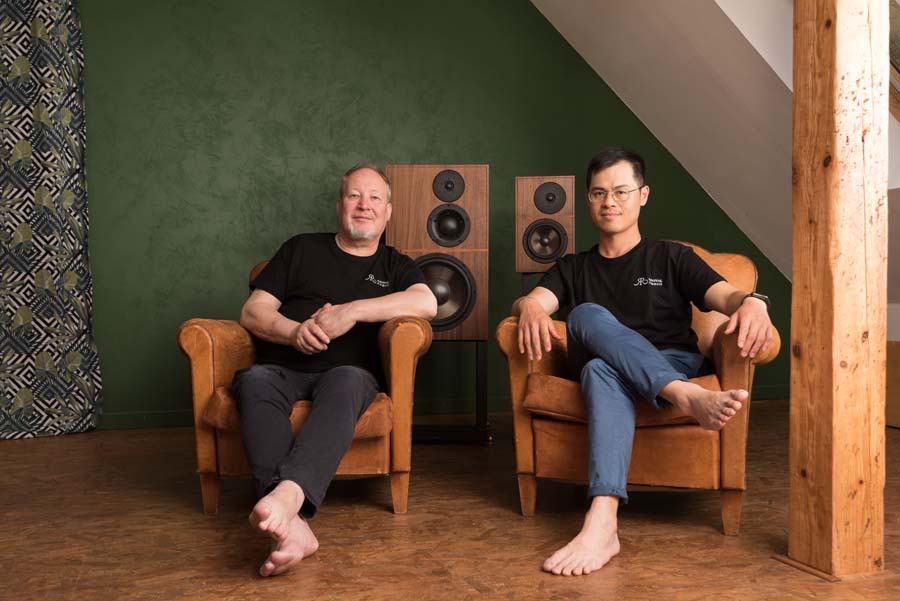
Daniel Emonts and Jacky Lee are the main players behind this French brand
The company is based in Alsace in the far East of France and the two main players’ pedigrees suggest that this is a company who have their sights set on shaking things up a little in the world of HiFi and I was particularly drawn to their statement about the Revival Audio Community – “A customer-centric community with exclusive benefits”. This latter point gives you a 45 try-at-home program allowing you to make your own mind up about the speakers in your own system and in your own listening space. It also gives you free delivery in the EU and the UK and a TEN-YEAR warranty. In truth, there’s not a lot to go wrong with loudspeakers but this ten-year warranty certainly puts the company’s proverbial money where its mouth is and will offer buyers and potential buyers a good degree of peace of mind when making purchasing decisions.
THE TECHNOLOGY OF REVIVAL AUDIO ATALANTE 5
The RASC TWEETER, like the other drivers in the Atalante 5 has been designed by Daniel Emonts. It is a 28mm soft-dome affair with asymmetric suspension to provide a more “linear resonance-free guiding of the dome” and better dispersion. The Ferrite magnets used in the tweeter are 100mm and give a 91dB sensitivity. The company tells us that Ferrite magnets are used in place of neodymium in an effort to keep costs lower and be more eco-friendly. The coating on the dome tweeter is made to Revival Audio’s own recipe and they claim it brings “perfect” break-up control.

The tweeter unit used on the Atalante 5
The RASC MIDRANGE is a 75mm soft dome and features an inversed suspension and has the same coating as the tweeter and for the same reasons. The driver (ARID+) is a dome-shape with its surface being software simulated to avoid resonances. The shape is said to guide waves behind the ARID to be absorbed by the large back cavity, which looks like it is tapered. Here you get a 140mm Ferrite magnet and 92dB sensitivity.
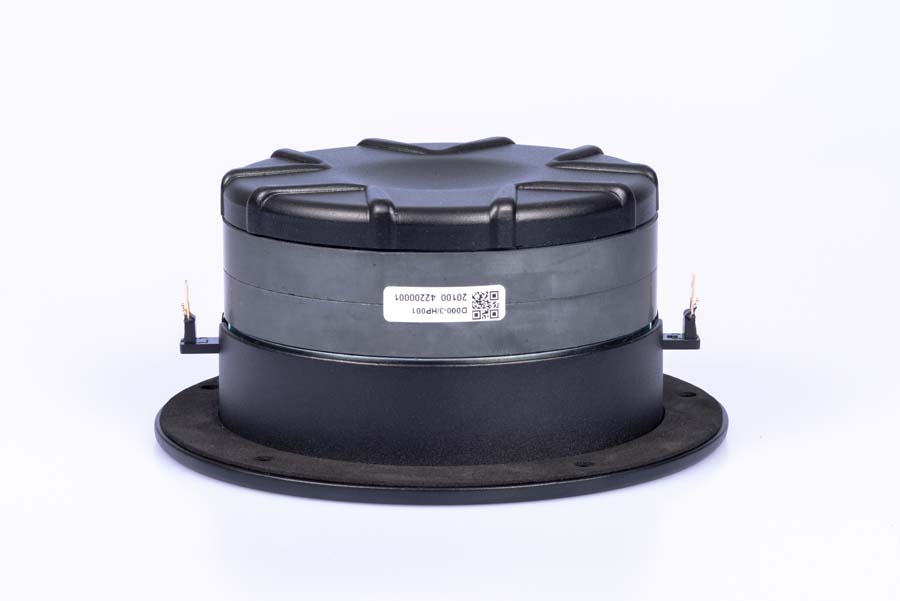
The mid dome driver used omn the Atalante 5
The bass driver in the Atalante 5 is of a Basalt Sandwich Construction (BSC) and is said to be a first. Yes, this is the Basalt you know from geography class! It’s said to have similar characteristics to glass fibre and is eco-sustainable. The basalt fibre is made into a fabric that is the top layer of the sandwich, then there is a polymer glue interface to joint bond the fabric to a felt filling and the bottom of the sandwich is a “customised foam-based” layer. Essentially, the sandwich is designed to be lightweight and rigid. The basket is open and asymmetric and the magnet is a Ferrite one, once again.
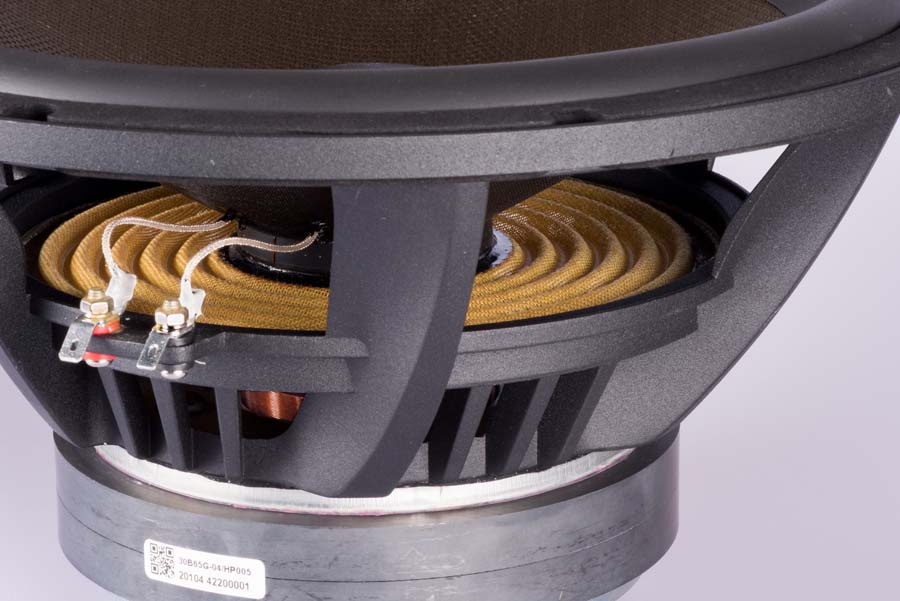
The 12 inch driver on the Atalante 5 is rear ported
REVIVAL AUDIO ATALANTE 5 DESIGN AND AESTHETICS
The speakers arrived in two separate BIG cardboard boxes. The packaging is well thought with the speakers being well protected but easy to get out of their boxes safely and easily – you can do this on your own but I’d recommend a couple of people get involved in the unpacking process. A stand arrives in a separate box and will need some bolting together.
These are big speakers and measure 71cm high and 42cm wide. Of course, they need to be big to incorporate the three drivers, one of which is a 12” BSC bass driver. The other two drivers are the 1 1/8” soft-dome tweeter and the 3” soft-dome mid. The speakers are heavy at 33 kg.
Claimed frequency response is down to 28Hz and this is via bass-reflex loading, with a pair of ports on the rear panel of the speakers. Usefully, and to allow a good degree of tuning of the bass, foam bungs are included. Crossover points are 450Hz and 3.5kHz. The nominal impedance is 4 Ohms and the speakers are 89dB sensitive, which would suggest to me that they will like a good bit of power up them. However, I did run them in using a Hiraga Le Monstre amp that has just 8W of Class A power to its name and I’m sure I could have happily lived with that combo. However, for the majority of my time listening to these speakers, I chose our Krell KST100 and it worked very well. They are equipped with a single pair of nice quality speaker binding posts.
The finish on the speakers is a lovely walnut veneer and they come with a pair (per speaker) of magnetic grilles that carry on the retro feel of these speakers. There’s a band of lighter veneer around the middle of the speakers that sets them off nicely and the whole look is very classy indeed, if somewhat traditional. I like speakers that look like speakers and I think many others will enjoy the aesthetic of the Atalante 5’s design. They have a sort of “mid-century” look that is in vogue at the moment but they will look good juxtaposed against modern interiors too. Like it or not Mr. and Mrs. Audiophile, looks are important when considering a pair of loudspeakers that you will sit in front of for (hopefully) many years.
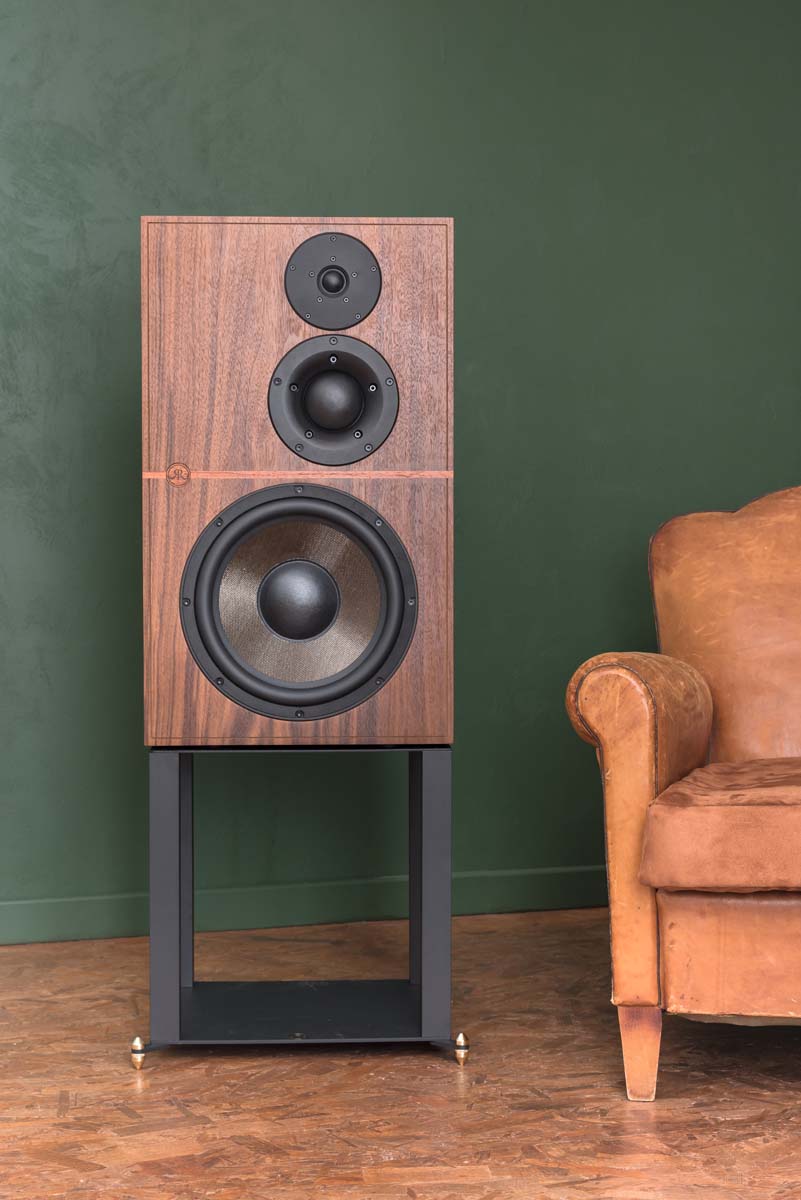
These are a big speaker and ideally need space to perform at their best
Without their stands, they tilt upwards towards the listener and look very cool. On their stands they are pretty imposing – I like this, but be aware that you will need a good bit of space to accommodate the Atalante 5 and their stands.
The stands are relatively simple to put together, but it did take me a fair bit of time (half an hour or so) to get them sorted. I’m no DIY enthusiast and I would have much preferred the stands to come ready assembled, though I do appreciate that packaging and shipping considerations have to be taken into account with these kind of things. To get the speakers on the stands you need to remove the larger front lip from underneath the speakers, though the second, smaller lip to the rear is not removable and a pair of, for want of a better word, washers are provided to space the speakers and top plate properly.
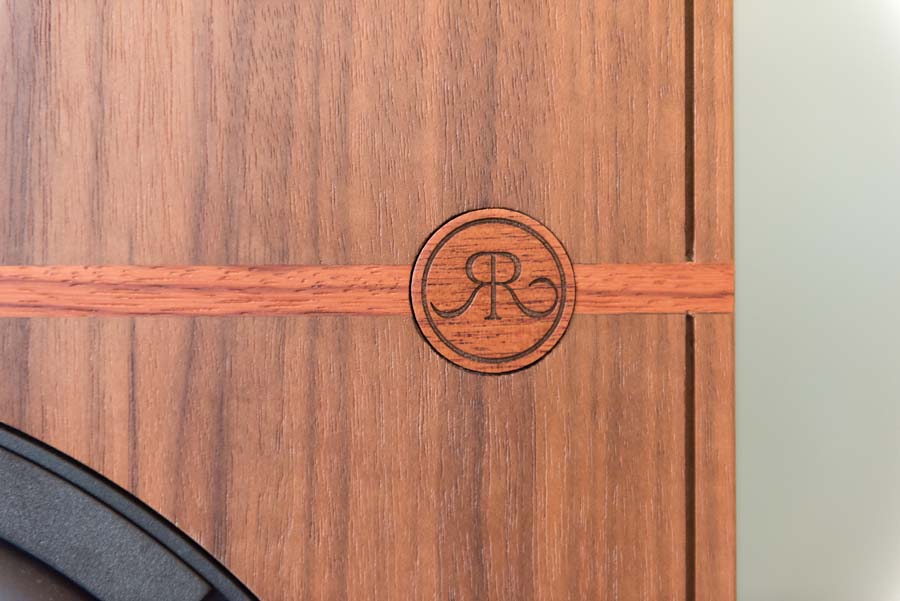
The speakers are really nicely finished and with good attention to detail
SOUND OF THE REVIVAL AUDIO ATALANTE 5
The system for this review was the Stack streamer and its associated power supplies and filters, our Lampizator Big7 DAC (modded), and a Krell KST100 power amp. The pre we used for this review was the latest Baby Reference from Music First Audio and which we have been getting to know for the last couple of months. This is a system that is resolving and transparent, but also highly enjoyable from a musical perspective. All electronics are fed by a Torus unit and Atlas and Way Cables mains cables. Interconnects were Tellurium Q and speaker cables Way Cables.
The speakers were run in for a good period with me playing a whole load of house and techno through them whilst I practiced DJing. No critical listening was done until I thought the speakers were sufficiently run-in.
I had the speakers well out into the room and away from the side and back walls and firing down the room with a slight tilt in towards the listening position and about 3m apart. Setting the speakers up wasn’t a difficult job at all though I did much prefer the speakers away from walls. I suppose the use of the bungs will allow positioning nearer to back walls. I did try the bungs in and out in the position I had the speakers in and I much preferred the fuller sound of the Altante 5s bungless. I also played with the mid/tweeters being positioned towards the middle and outer (the speakers are mirror images of each other) and I personally preferred the sound with them towards the middle. For me, this gave a more realistic souondstage to when the tweeters/mids were to the outside of the speakers – again, YMMV.
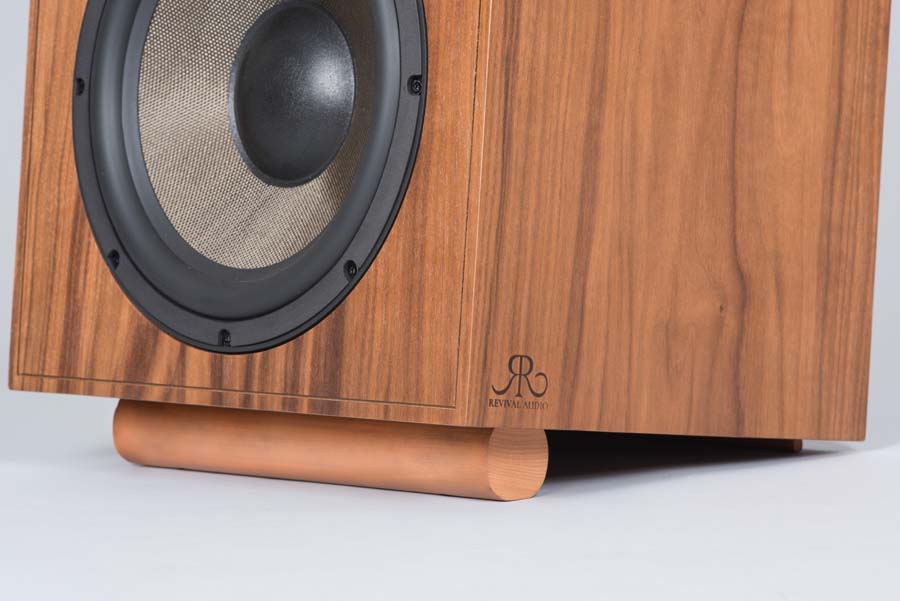
A clever lip arrangement allows you to have these speakers without the stands which cost £400 extra
I wasn’t really expecting a great deal from these speakers – they look like speakers you would have found back in the 70s and 80s and they are “just” a rear-ported box. I also didn’t expect them to image very well given that they are very wide, but I was wrong on both these counts. Imaging is very, very natural and unforced with the Atalante 5, and whilst they certainly don’t aurally disappear, they are a very pleasing speaker to listen to in this respect.

In situ at HiFi PiG with our Avantgarde Duo XDs in the background to give a sense of the size of these speakers
My other expectation of these speakers garnered from when I was running them in, was that they would be bass heavy. Again, this expectation proved to be false and what you actually have with the Atalante 5 speakers is a very nice and very balanced approach to the way they play music. Yes, they will go deep when needed (the opening to Spritiualized’s I Think I’m In Love (Chemical Brothers Remix) had the required oomph from the basslines and associated noises. Quoted bass response is down to 28Hz. One of the criticisms aimed at bass-reflex speakers is that they can offer up a one-note bass response, but this is not the case here and it was easy to discern the different notes in tunes. Dusty Kid’s Crepuscolaris fair rattled the walls when played at volume, though they also played contrabass really well on tracks like Charles Mingus’ Wednesday Night Prayer Meeting where basslines were easy to follow within what is a very busy track. Listening to Gil Scott-Heron’s Bottle, has the fast and muted bassline really simple to pick out from the rest of the tune and was a really enjoyable thing to listen to. Donker’s Adagio in D minor from a Classical Church Organ record had my app showing 32Hz (around -80dB) which I thought was pretty impressive. If church organ music is your thing then these speakers will please you, I’d suggest.
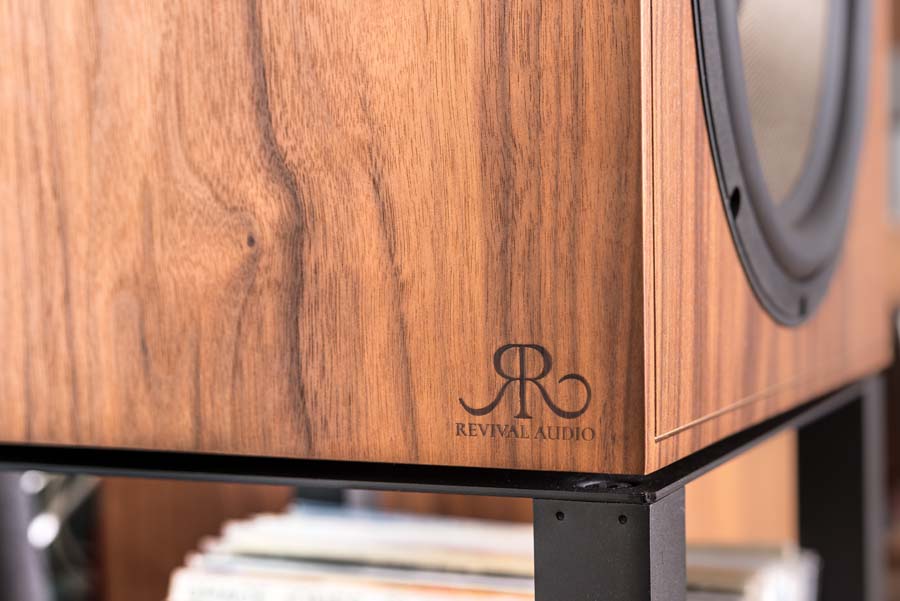
Another example of the attention to detail on the Atalante 5
I sort of hate separating bits of kit out into how they performed in the tops, mids, bass, and whatnot, but I suppose it’s really the only way to give you, dear reader, an overall feel for, in this case, the speaker’s presentation and attributes. I’d be interested to hear others’ thoughts on this on our social channels!
These are a big speaker and have a 12” bass driver and you would expect them to do bass, but the whole bass thing without definition and coherence with other frequencies makes for an unbalanced one-trick pony of a speaker – these do definition and coherence. I listened to a lot of music on these speakers over a good period of time and I thought they played well with many different genres. Bowie’s The Bewlay Brothers showed they could do subtlety and nuance as well as just banging out the party tunes. The strummed guitar has clarity and detail with the differences between being strummed hard and softly being clearly audible. The steel strings of the “solo” acoustic guitar were also well-evident. You don’t have the same kind of feeling for the instrument here as, say, the Audiovector R3 or R6 speakers we have to compare against, but for the asking price (€4490/£4490 plus £399 for the stands) I think they do very well at the whole definition thing through the mids and high-mids. This is an important frequency range for speakers to get right and whether it was Bowie, David Crosby or Gil Scott-Heron I was listening to, I had few complaints. Being highly critical, I would suggest that this upper-mid was a smidge compressed when compared to our much more expensive reference speakers, and, indeed, our Avantgarde Duo XDs, but the vast majority of folk will be well-chuffed with their purchase. In some ways I would rather have this slight compression in this frequency than a speaker be all shouty and too forward in its presentation that some cheaper speakers demonstrate.
The tops are similarly nicely balanced and not too sharp, spiky, or shouty. This leads to a listening experience that is easy to get on with for long periods without you reaching for the volume button. You don’t get the hats flying around the room like you do with, say, the R6s I mentioned but there’s enough movement and a sense of spaceyness to satisfy.
I do think these speakers enjoy a bit of power up them and I tried them with our Hiraga Le Monstre, our Lab 12 Suara and our Clones Audio 25iRX but found that the grunt of the solid-state Krell KTS100 brought the best out of them – they like an amp with a firm grip, I think.
QUIBBLES
Bolting the stands together took a lot longer than I thought it would and I’d have preferred to have had them arrive ready assembled. You also have to remove the front lip of the underside of the speakers to attach them to the speakers.
You need a big space for these speakers and they do dominate a room, particularly on their stands. They also like space behind and to the sides of them and so if you don’t have a larger room and you are interested in this brand, then you may want to take a look at their smaller Atalante 3 loudspeakers.
They are not the most detailed speakers I have listened to through the presence band, but what they do is offer a compromise that is, I think, sensible – OK, that’s not really a quibble and should be seen as a positive attribute.
CONCLUSION
Overall these are not the most refined speaker I have listened to, but then they (sonically) do a lot of things right and which I find really enjoyable in a loudspeaker. I also think you are getting a lot of speaker for your money when compared to some of the other offerings out there – perhaps, a little too much by way of their physical size and the kind of room I think you need to give them the space to properly breathe and work to their full. If you have the space then they are a fab allrounder that will delight!
Dynamically, these speakers bounce along like an excitable (large) puppy on speed.
They are definitely a speaker you can crank up and belt out the party tunes, but they are also a reasonably refined speaker for the asking price. They don’t shout at you and they are not in your face through the vocals and the tops are nicely done and not eardrum-piercingly aggressive. This is a good balance of attributes!
The finish on the speakers is lovely and they have that retro vibe that is all the rage at the moment (think JBL etc), but I was disappointed with the stands, particularly for the £400 asking price.
Personally, I really enjoyed these speakers and they appeal to the latent party person that still bubbles under the surface despite my rapidly advancing years. I think they will find favour with folk that want a speaker that is able to belt out the tunes as well as those looking for an “audiophile” loudspeaker. As I say, a nice compromise of attributes all-round.
AT A GLANCE
Build Quality:
Nicely finished and nicely veneered
Look great, though they are a large speaker and you should take this into account
Work well on their integrated “stand” but do need their stands to work at their optimum
Stands are a bit meh for the money
Sound Quality:
These go deep and with good speed and dynamics
Nicely thought out presentation that isn’t at all shouty or over-emphasised at any frequency
They know how to throw a party
Value For Money:
This is a lot of speaker for your money and it’s all presented very nicely
Stands are a bit pants and overpriced in my opinion
We Loved:
The finish is fantastic
Big, bold, and dynamic sound with enough resolution across the range to satisfy
Easy to listen to for long periods
A lot of box for your money
We Didn’t Love So Much:
They do need a big room and a decent amplifier to power then to best effect
The stands work but don’t really do the speakers justice and are expensive
Elevator Pitch Review: French brand Revival Audio produce only a couple of speakers; the Atalante 5 we have here and the smaller Atalante 3. This is a large three-way, rear-ported bass-reflex speaker that is very nicely finished in walnut veneer and with nice touches to the finish. Whilst they are a big speaker and certainly do bass, they offer a very enjoyable listen across the frequency spectrum and are equally at home with jazz vocals as they are with more party-oriented musical fare. Sensible compromises in presentation have been made to offer an excellent product at a reasonable price! They are not the most three-dimensional speaker with regards to sounstaging but it is perceived as being fairly natural. They come with an integral “footer” but to get the best out of them you really need the stand which is not then best I’ve seen, though it works well enough.
Price: €4490/£4490 plus £399 for the stands

Stuart Smith
Technical Specifications
Type 3-way bookshelf loudspeaker
Drivers 1 1/8” (28mm) soft-dome tweeter equipped with Revival Audio ARID (Anti Reflection Inner Dome) patent technology with a large back chamber with low resonance frequency of 520Hz. 3” (75mm) soft-dome mid-range equipped with ARID+ patent technology. 12” (30cm) BSC (Basalt Sandwich Construction) woofer
Frequency Response (+/-3db) 28Hz – 26kHz (-3dB)
Low Frequency Point (-6db)
Sensitivity (2.83V/1m) 89dB/2.83V/ 1 metre
Nominal Impedance 4 ohms
Minimum Impedance 3.2 ohms at 110Hz
Crossover Frequency 450Hz and 3.5kHz
Recommended Amplifier Power Power handling: 200 watts. Starting from 30-50 watts
Recommended Room Size 30 to 60m2
Dimensions (H*W*D) 710 mm x 420 mm x 355 mm
Net Weight 33 kg. (72.75 lbs.)
















































